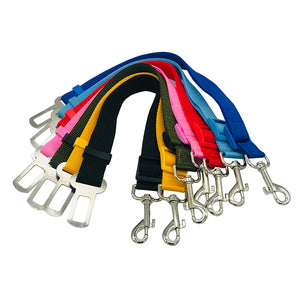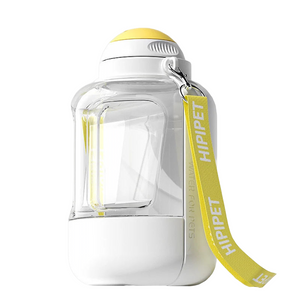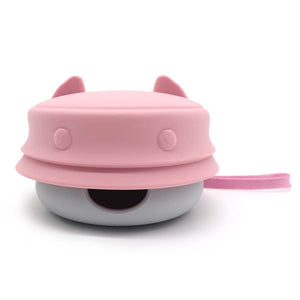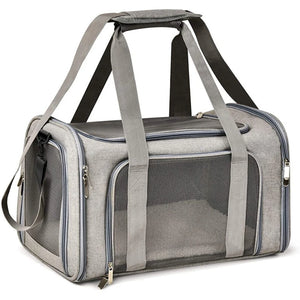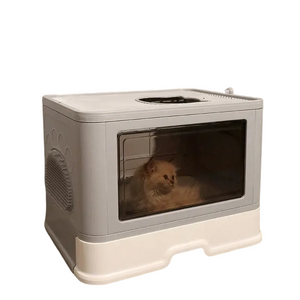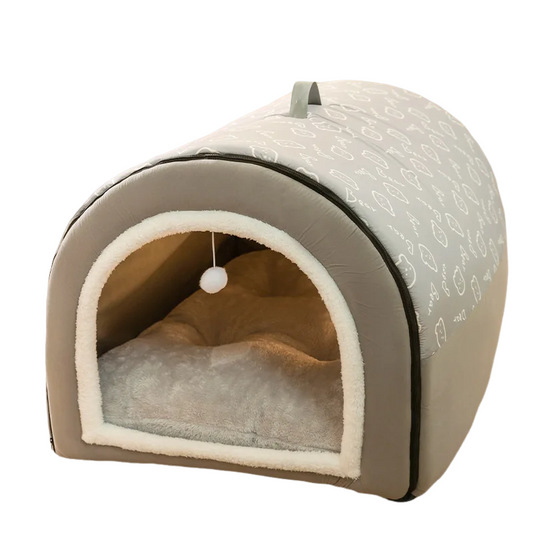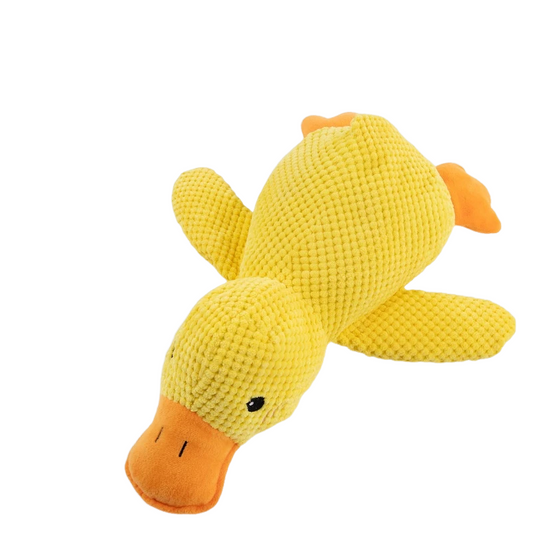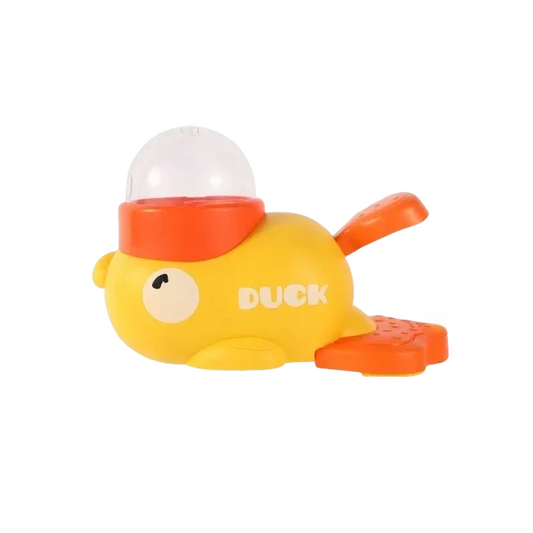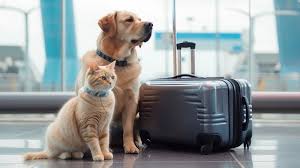
How to Prepare Your Pet for Holiday Travel: A Comprehensive Guide with Detailed Tips and Product Recommendations
Share
Introduction
The holiday season is one of the most exciting times of the year, but for pet owners, it often comes with the added responsibility of planning pet-friendly travel that ensures the well-being of their furry companions. Whether you're visiting family across the country or taking a well-deserved vacation, traveling with pets can be overwhelming without the right preparation. Proper planning is essential not only for your peace of mind but also for your pet’s comfort, safety, and health throughout the trip.
This ultimate guide to traveling with pets covers everything you need to know—from airline and road trip regulations to pet travel safety tips and stress-free packing essentials. Plus, we’ll introduce a selection of top-rated pet travel accessories from The Pet Paradise designed to make your journey smoother and more enjoyable for both you and your four-legged friend.
1. Understanding Travel Requirements: Plan Ahead
When preparing for holiday travel with your pet, the first step is to familiarize yourself with all pet travel regulations, especially if you’re planning to fly. Each airline has its own pet policies, and understanding them ahead of time helps you avoid last-minute stress or denied boarding. If you’re driving instead, taking the right pet travel safety precautions is equally important to ensure a secure and comfortable journey.
1.1 Air Travel Requirements:
- Airline Pet Policies: Each airline enforces different guidelines for flying with pets. Some carriers permit small pets in the cabin, while others require them to travel in the cargo area. Be sure to review the airline’s weight restrictions, approved pet carrier dimensions, and the specific pet health documentation required. Flights often have a limited number of pet spots, so it’s best to reserve your pet’s space well in advance.
- Required Pet Documentation: Schedule a visit to your veterinarian to collect necessary travel health certificates, updated vaccination records, and other forms required by your destination. For international trips, research import rules such as mandatory rabies vaccination, microchipping, or potential quarantine periods to ensure full compliance.
1.2 Road Trip Requirements:
Pet Car Safety Tips: For car travel, it’s essential to keep your pet properly restrained to protect them and minimize distractions while driving. Use a crash-tested pet travel crate or a secure seat belt harness that prevents movement and enhances safety during sudden stops or turns.
Recommended Product and Tips:
- Travel Safety Harness: This durable and adjustable safety harness keeps your dog or cat securely in place, reducing the risk of injury and making the journey safer for both your pet and driver. It's ideal for long road trips and compatible with most car seat belts.
- Pre-Travel Vet Visit: Before hitting the road, book a wellness check-up for your pet. If it’s their first long-distance trip, talk to your vet about travel anxiety, motion sickness, and possible solutions like pet calming aids or natural supplements to ease the ride.
2. Preparing Your Pet’s Travel Kit: Essentials to Bring
Once you've taken care of all pet travel logistics, the next step is to pack a comprehensive pet travel kit filled with essentials to keep your furry friend comfortable and stress-free on the go. Think of it as packing a personalized suitcase for your pet. Being prepared with the right items ensures a smoother journey and allows you to respond to any unexpected situations with ease.
2.1 Must-Have Items in Your Pet’s Travel Kit:
- Food and Water Supplies: Always pack enough pet food and fresh water to cover the entire trip, plus a little extra for delays or emergencies. If flying, check your airline’s specific policies on transporting pet food and water to avoid issues at the airport.
- Portable Food and Water Containers: Especially during road trips with pets, access to clean water and meals can be unpredictable. Bringing travel-friendly bowls or containers that are lightweight and easy to refill is essential for keeping your pet nourished and hydrated throughout the journey.
Recommended Product:
Portable Pet Water Bottle – This compact and spill-proof travel bottle is perfect for outdoor adventures and long drives. Designed with a one-hand dispensing system, it allows you to offer water on demand without waste or mess, keeping your pet hydrated and happy wherever you go.
- Comfort Items: Favorite Toys and Blanket: Traveling can be stressful for pets, but familiar items can help ease their anxiety. Pack their favorite chew toy, plush item, or blanket—something that smells like home—to create a sense of comfort and routine during unfamiliar experiences.
- Collapsible Cat Litter Box: For cat owners, a portable litter box is a non-negotiable item when traveling. Choose a foldable or travel-size litter box that’s easy to pack and quick to set up. Don’t forget to bring sufficient litter and a scoop for easy clean-up on the road.
- Pet First Aid Kit: Emergencies can happen anywhere, so a pet-specific first aid kit is a must. Include gauze, antiseptic wipes, tweezers, scissors, and any prescribed medications your pet might need. Being prepared ensures peace of mind and can make a big difference in unexpected situations.
3. Ensuring Your Pet’s Comfort: Tips for a Stress-Free Journey
Traveling can be overwhelming for pets, especially if they’re unfamiliar with new environments or long journeys. Whether you’re driving with your pet or preparing for airplane travel with animals, here are several practical ways to ensure a smooth and comfortable trip for your furry companion.
3.1 Making the Journey Comfortable:
- Create a Comfortable Travel Space: No matter the mode of transport, your pet needs a secure and cozy spot. For smaller pets like cats or toy breeds, a well-ventilated travel crate lined with soft bedding provides both comfort and safety. For medium to large dogs, securing them in the back seat with a padded dog car harness ensures stability and reduces anxiety throughout the ride.
- Frequent Breaks on Road Trips: When traveling by car, schedule regular rest stops to let your pet stretch, use the bathroom, and drink water. Ideally, breaks should be taken every 2–3 hours, especially on long drives, to avoid restlessness and dehydration.
3.2 Managing Anxiety During Travel:
- Use of Calming Aids for Travel Anxiety: Many pets experience stress or travel anxiety, especially during unfamiliar or long-distance trips. To help soothe their nerves, consider natural solutions like calming sprays, pheromone-infused blankets, or L-theanine-based supplements. These tools can make a significant difference, especially on flights or when your pet is confined for extended periods.
-
Recommended Product:
Anxiety Relief Blanket – This ultra-soft and breathable blanket is designed to help relieve stress in pets during travel. Infused with pet-safe calming pheromones, it provides a familiar scent and texture that helps pets feel secure in unfamiliar environments—perfect for car rides or airplane cabins. Pair it with a calming spray for maximum relaxation.
4. Travel Safety: Precautions to Keep Your Pet Safe
Ensuring your pet’s safety is one of the most important parts of holiday travel. Whether you're embarking on a road trip with your dog or cat or preparing for air travel with pets, taking key precautions can prevent accidents and keep your furry friend secure and comfortable throughout the journey.
4.1 Road Safety for Pets:
- Secure Your Pet During Car Rides: Unrestrained pets are not only a distraction to the driver but also vulnerable to serious injury during sudden stops or collisions. For optimal car travel safety, use a pet travel harness, crash-tested carrier, or dog seat belt restraint. These tools are designed to keep your pet stationary and protected throughout the ride.
- Temperature Control and Vehicle Safety: One of the biggest dangers during pet travel is leaving pets unattended in parked vehicles. Even in mild weather, cars can quickly reach extreme temperatures, posing fatal risks. Use window shades, cooling mats, or portable fans to maintain a safe environment when on the move—and never leave your pet alone in the car.
4.2 Air Travel Safety:
- Choose an Airline-Approved Pet Carrier: When flying, your pet's carrier should comply with the specific airline pet travel requirements. Look for IATA-compliant carriers that offer proper ventilation, secure locking mechanisms, and enough room for your pet to stand, turn, and lie down. A soft-sided carrier may be suitable for in-cabin travel, while hard-shell models are better for cargo holds.
-
ID and Contact Information: Clearly label your pet’s carrier with your full contact details, flight itinerary, and pet’s name. In addition to tags on their collar, ensure your pet has a microchip for identification in case of separation. Some owners also attach a recent photo of their pet to the outside of the carrier for added security.
5. Dealing with Unexpected Delays and Emergencies
Even the most well-planned trips can encounter unexpected challenges. Whether it’s a delayed flight or an extended road trip due to traffic, having a backup plan can make all the difference.
Tips for Handling Delays:
-
Extra Supplies: Always pack extra food, water, and any essential medications your pet may need. Delays happen, and it's better to be prepared for them.
-
Comfort Breaks: If your trip is unexpectedly extended, be mindful of your pet’s needs. Take breaks to ensure they stay hydrated and comfortable, and give them plenty of opportunities to relieve themselves.
Conclusion
Holiday travel with pets doesn’t have to be stressful. With proper planning, the right gear, and a little patience, you can make the experience enjoyable for both you and your pet. Whether it’s a road trip to visit family or a flight to a tropical destination, your pet will feel safe and comfortable with the right preparation.
By following these tips and using the recommended products from The Pet Paradise, you can ensure that your holiday trip is a smooth and stress-free experience for both you and your furry companion. Remember, the key to successful pet travel is to plan ahead, stay flexible, and always put your pet’s comfort and safety first.




